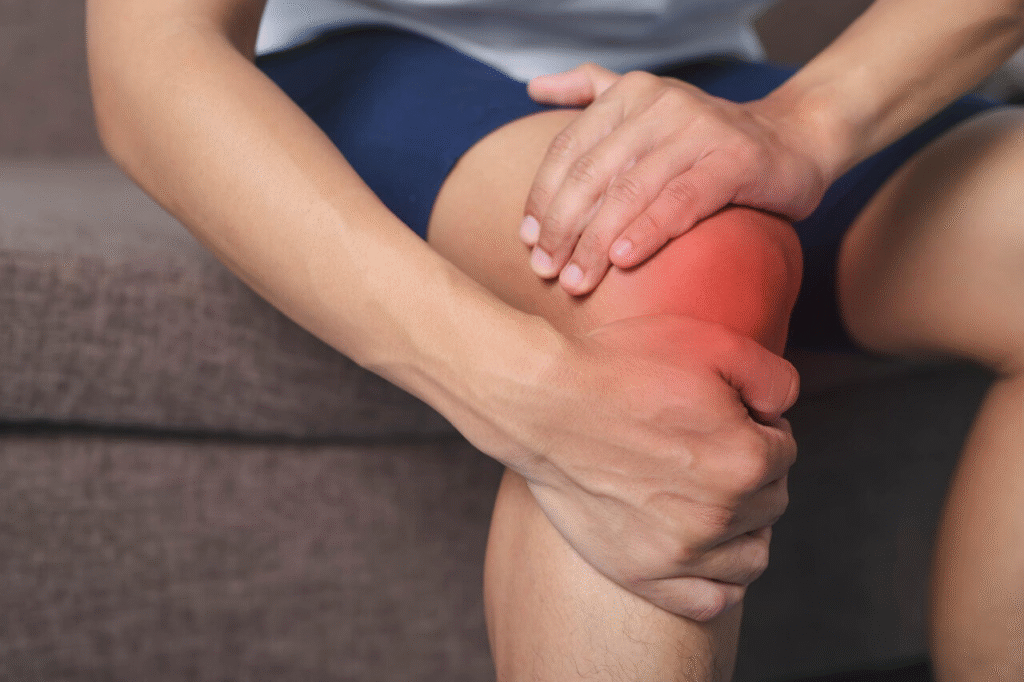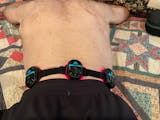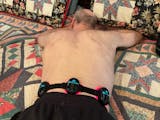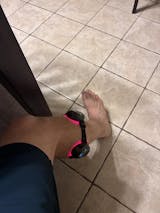Recovering from a knee injury can feel overwhelming, but it's entirely possible to get back into exercise with the right approach. Whether you're dealing with a sprain, strain, or surgery recovery, it's important to take things slow and prioritize safety. In this article, we'll guide you through the best practices for easing back into exercise, using medical-grade red light therapy devices, and building strength gradually while protecting your knee.
Understanding Knee Injury Recovery
The Importance of Rest and Rehabilitation
Rest is crucial after a knee injury, especially in the early stages of recovery. Pushing yourself too soon can lead to further damage, delaying your return to full activity. Focus on allowing your knee to heal properly before resuming intense workouts. Rest doesn’t mean complete inactivity, though – gentle exercises and stretches, as recommended by your doctor, will help maintain mobility.
How Long Should You Wait Before Exercising Again
The recovery time for a knee injury varies based on the severity of the damage. For minor injuries, you might be able to return to light exercise within a few weeks. However, more serious injuries may require months of rehabilitation. Always follow your healthcare provider’s advice and avoid rushing back into physical activity.

The Role of Physical Therapy in Recovery
Physical therapy is a cornerstone of knee recovery. A physical therapist will help guide you through exercises designed to improve strength, flexibility, and range of motion. Following a tailored rehab plan will ensure you regain proper movement and avoid future injuries.
Best Low-Impact Exercises to Begin With
Swimming: A Great Full-Body Workout
Swimming is one of the best low-impact exercises you can do for knee recovery. The buoyancy of the water reduces the stress on your joints, allowing you to perform full-body workouts without straining your knee. Start with gentle laps and gradually increase intensity as your strength improves.
Cycling: Strengthen Your Legs Without High Impact
Cycling is another excellent option for building strength without putting stress on your knee. Begin with a stationary bike to control the intensity and work your way to outdoor cycling. Be mindful of your form and keep the resistance low at first to avoid excessive strain.
Elliptical Machines: A Safe Alternative to Running
Using an elliptical machine can help improve cardiovascular fitness while providing a low-impact workout for your knee. The movement mimics running but with less impact, making it ideal for knee recovery. Start with short sessions and gradually increase the duration as your knee strengthens.
Yoga: Flexibility and Balance for Recovery
Yoga can be a great way to regain flexibility and balance, which are crucial for knee rehabilitation. Start with gentle, restorative poses that don’t require deep knee bending. Focus on stretches and poses that target the muscles surrounding your knee to provide support and stability.

Incorporating Red Light Therapy Devices for Faster Healing
How Red Light Therapy Can Help
Red light therapy at home full body - PRUNGO FluxGo, is a powerful tool for speeding up recovery from a knee injury. These devices use light to penetrate deep into tissues, reducing inflammation, promoting blood flow, and accelerating the healing process. Regular use of FDA approved red light therapy can help manage pain and improve tissue regeneration, making it an essential part of your recovery routine.
How to Use Red Light Therapy Safely
Using red light therapy devices is simple, but it’s important to follow manufacturer guidelines for safe and effective use. For knee injuries, apply the device directly to the affected area for about 10-15 minutes per session. Daily use can significantly improve your recovery time and provide pain relief.
Benefits of Red Light Therapy Beyond the Knee
While red light therapy for pain is effective for knee injuries, it offers benefits beyond just healing the knee. It can reduce muscle soreness, increase flexibility, and promote overall recovery. Adding a red light therapy panel or red light therapy mask to your routine can speed up recovery, improve joint health, and even boost energy levels.

Gradually Increasing Workout Intensity
Begin With Short, Light Sessions
After your initial recovery phase, it’s important to start with light and short workout sessions. Focus on exercises that strengthen your knee without overloading it. Gradually increase the length and intensity of your workouts as your strength and confidence in your knee improve.
Monitor Pain Levels During Workouts
Always listen to your body during the recovery process. If you experience pain, stop immediately and give your knee more time to heal. Pain is a signal that your knee may be under too much stress, and pushing through it could worsen the injury. Keep track of how your knee feels during and after workouts to ensure you don’t overdo it.
Include Strength Training for Knee Stability
Strength training is vital for rebuilding the muscles around your knee, which will provide better support and prevent future injuries. Start with bodyweight exercises, such as squats and lunges, before gradually introducing light weights. Focus on exercises that target the quadriceps, hamstrings, and calves.

Key Exercises to Avoid After a Knee Injury
High-Impact Activities Like Running
High-impact activities, such as running, should be avoided initially after a knee injury. These exercises place a lot of strain on the knee joint and can aggravate inflammation. If you're eager to run again, make sure your knee is fully healed and consult with your doctor or physical therapist before resuming this activity.
Deep Knee Bends and Twisting Movements
Exercises that involve deep knee bends or twisting motions should be avoided during the early stages of recovery. These movements can put undue stress on the knee joint and may lead to reinjury. Stick to gentler exercises that encourage mobility and strength without excessive knee movement.
Jumping or Plyometric Movements
Jumping exercises, such as box jumps or jump squats, should be avoided until your knee is strong enough to handle the impact. Plyometric exercises put a lot of pressure on the knee joint, and it's crucial to wait until your knee has regained its strength and stability.
Monitoring Your Progress and Adjusting Your Routine
Track Your Pain and Mobility
Keeping track of your pain levels and knee mobility will help you monitor your progress throughout your recovery. If you notice any increase in pain or limited range of motion, it may be time to adjust your routine. Consult with your physical therapist to make sure you're on track.
When to Consult a Doctor or Physical Therapist
If you experience any setbacks or worsening symptoms, it’s important to seek medical advice. A healthcare professional can assess your knee and adjust your rehabilitation plan if necessary. Regular check-ins with your doctor or therapist will help ensure your recovery is on the right path.
Setting Realistic Goals for Your Recovery
Recovery takes time, and it’s important to set small, achievable goals. Celebrate each milestone, whether it’s regaining full range of motion or completing your first light workout. Setting realistic goals helps keep you motivated and focused on long-term success.

Lifestyle Changes to Support Knee Health
Maintain a Healthy Weight
Excess weight can increase stress on your knee joints, slowing down recovery and leading to more strain. Maintaining a healthy weight can significantly reduce pressure on your knees and improve joint function. A balanced diet combined with regular exercise can help you maintain an ideal weight.
Proper Nutrition for Joint Health
Eating the right foods can support joint health and help your knee recover faster. Incorporate omega-3-rich foods like fish, along with antioxidant-rich fruits and vegetables. A nutrient-dense diet promotes tissue repair, reduces inflammation, and supports overall joint health.
Staying Active Without Overdoing It
While rest is important, staying active in a way that doesn't strain your knee is also crucial. Engage in low-impact activities regularly to maintain mobility and avoid stiffness. Consistency is key to recovery, so aim to stay active without overloading your knee.
Conclusion
Recovering from a knee injury requires patience, persistence, and a well-thought-out plan. Focus on low-impact exercises and utilize medical-grade red light therapy equipment to aid rehabilitation. Gradually increase exercise intensity, listen to your body's response, and seek professional guidance as needed. Following a comprehensive rehabilitation plan not only protects your knee but also builds strength, laying a solid foundation for long-term recovery. Prungo offers high-quality red light therapy equipment designed to support your joint health and recovery journey.
















Share:
How to Cure Neck Pain Fast: A Complete Guide to Relief
How to Tighten Neck Skin